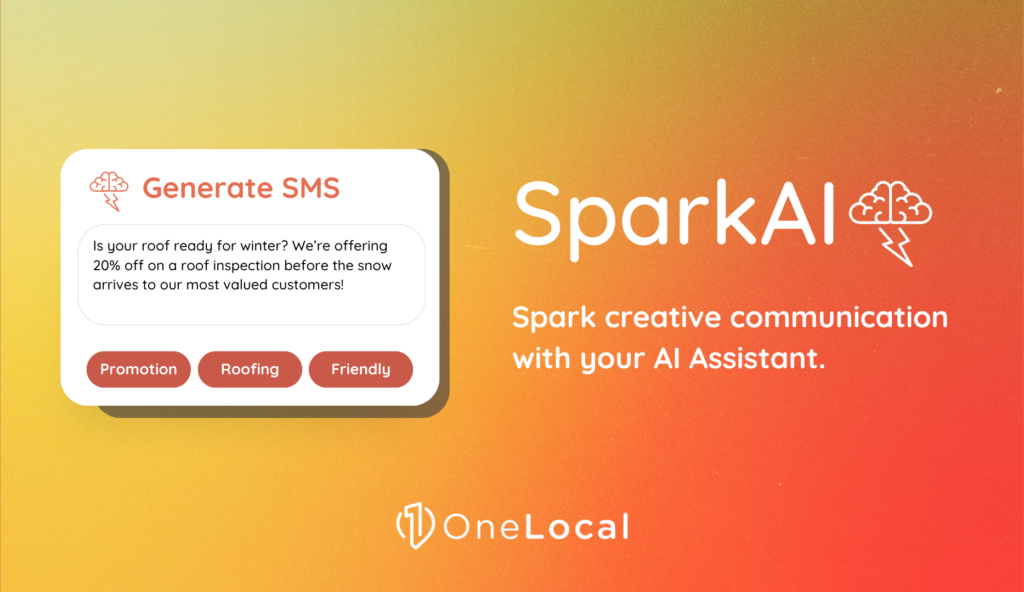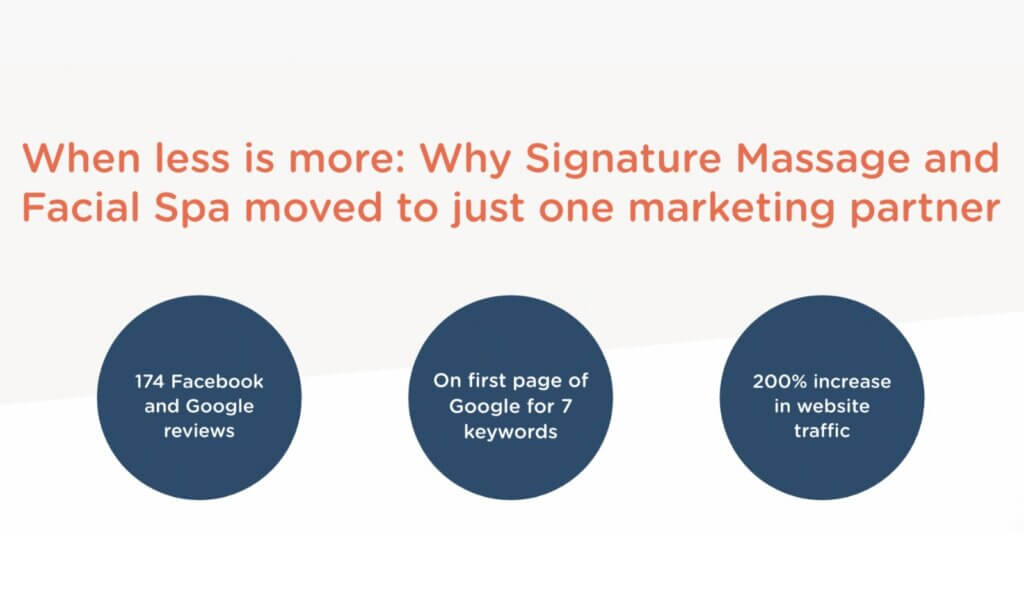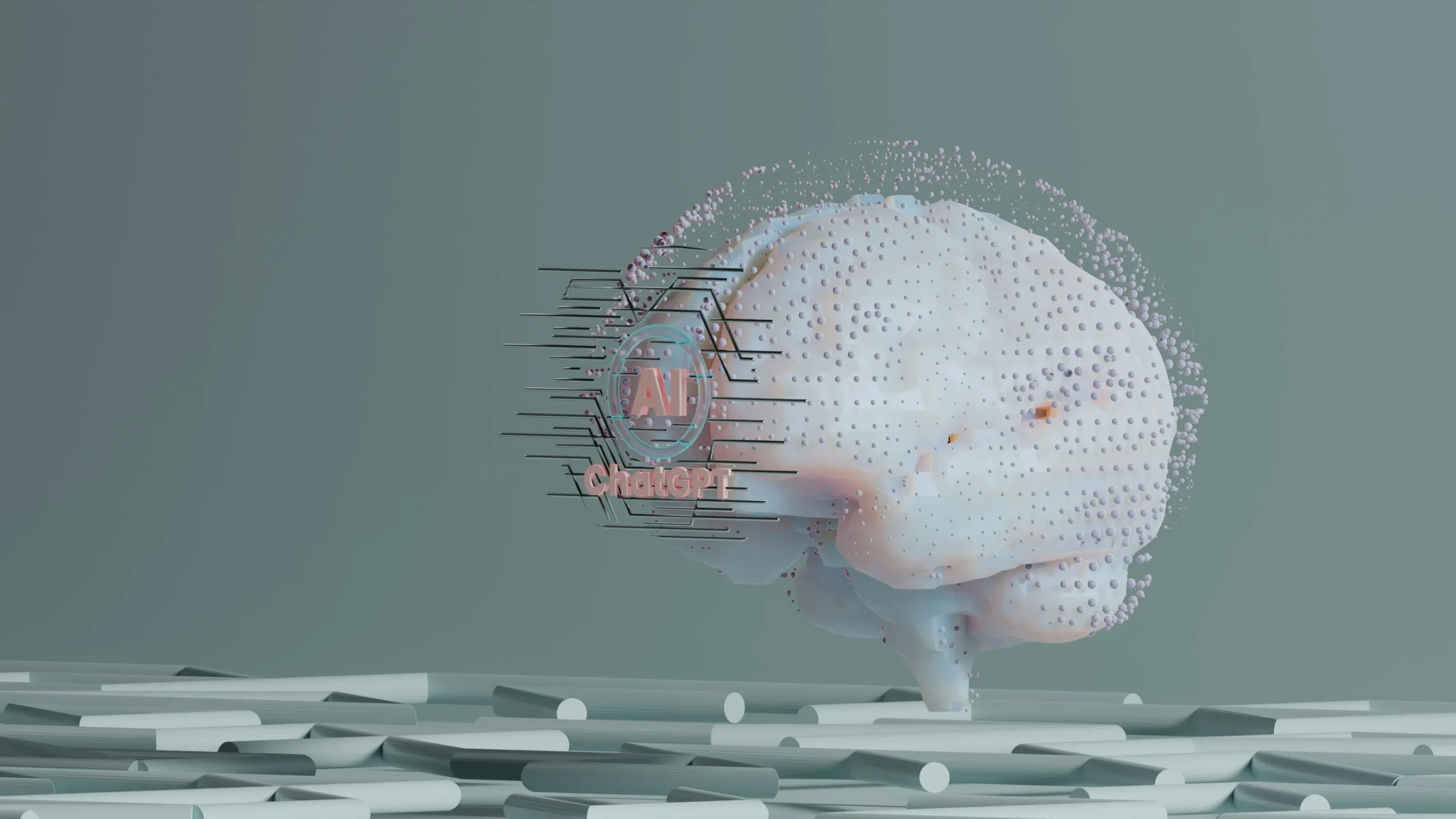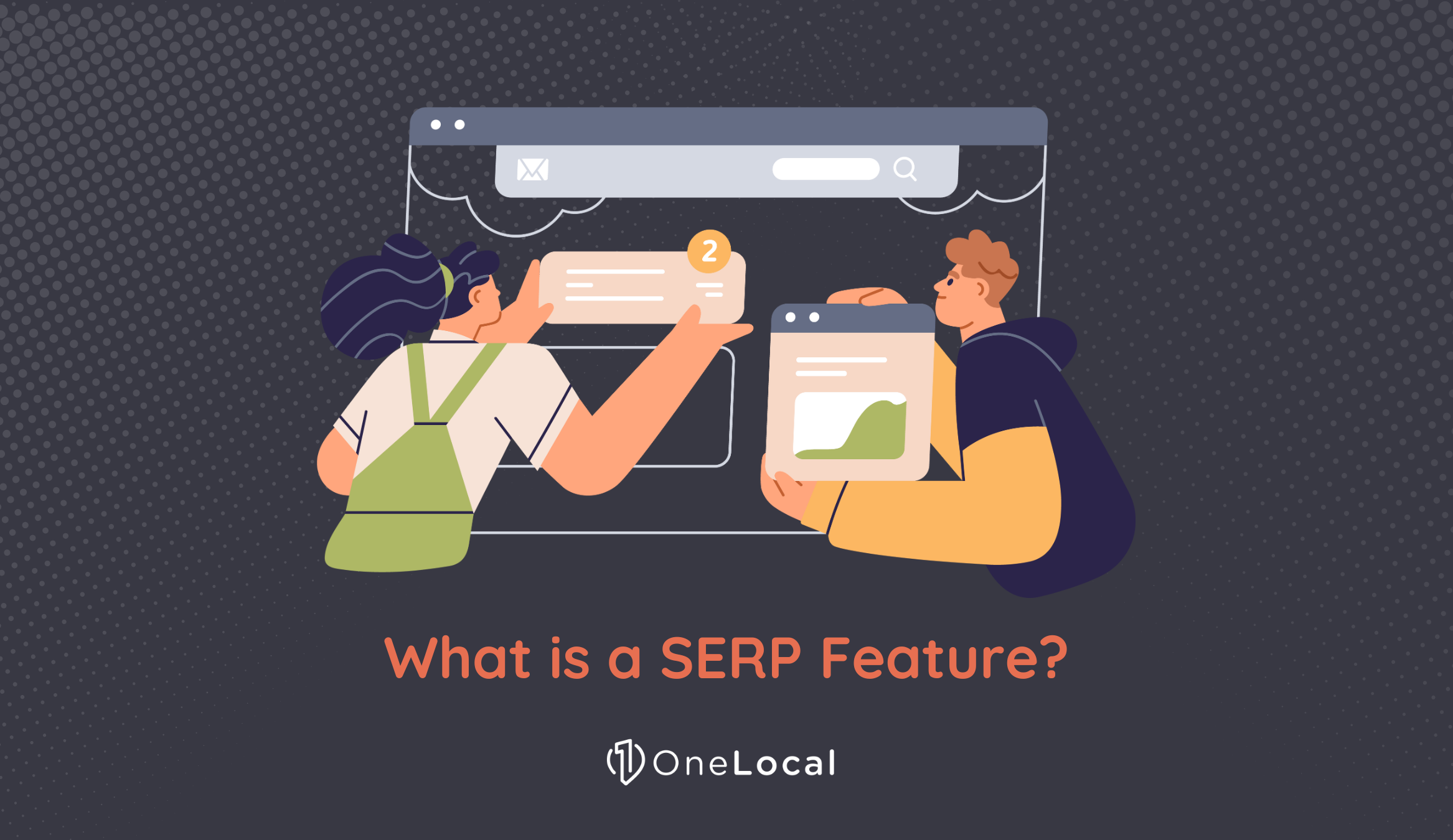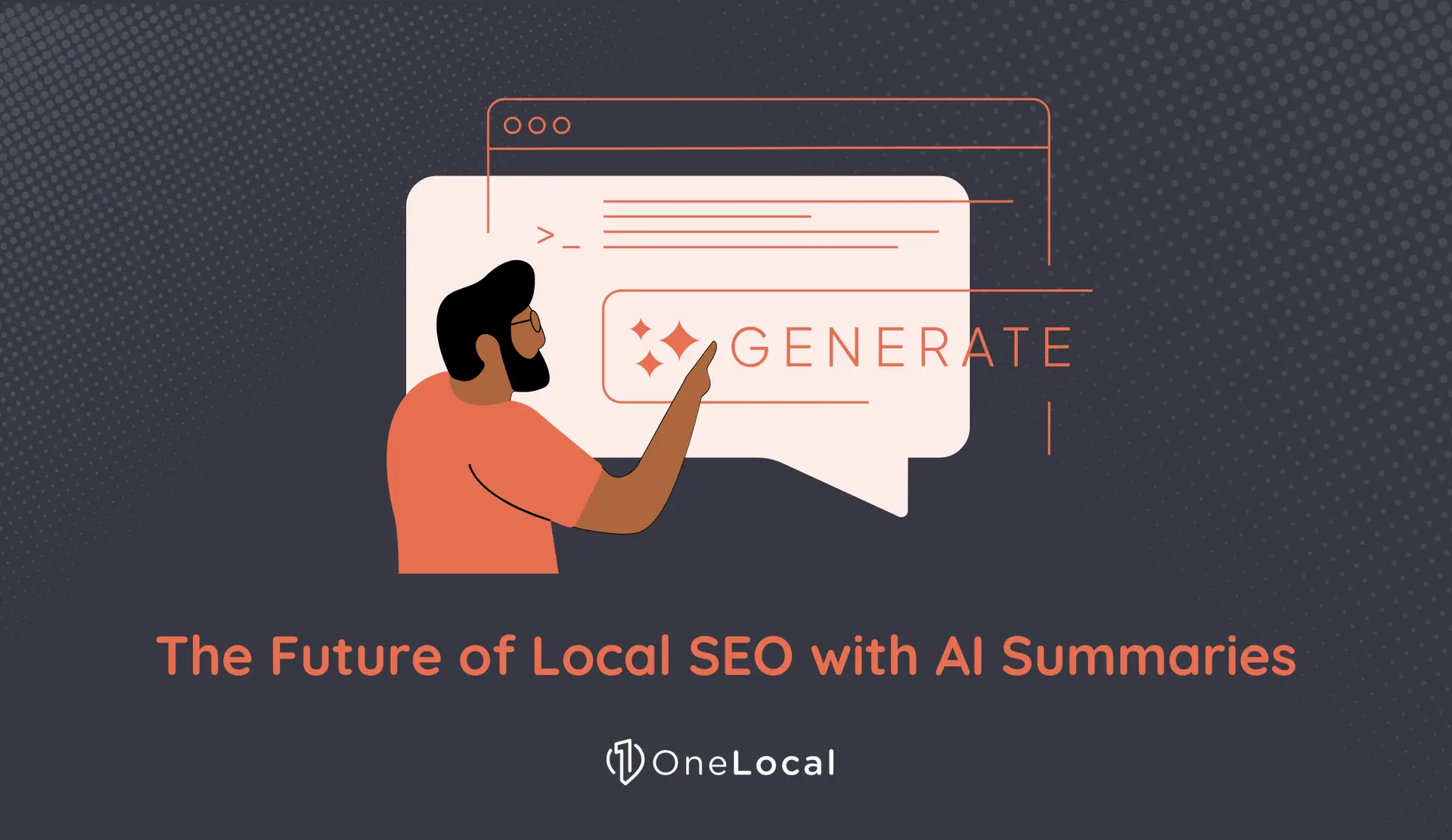Artificial Intelligence (AI) is offering new opportunities to improve efficiency, decision-making, and customer experiences. However, many struggle with understanding how to use AI, how to integrate it into their workflows, and which tools are best suited for their needs.
Additionally, concerns about cost, complexity, and potential risks often hold people back from exploring AI’s full potential.
This guide is designed to help you overcome these challenges by breaking down AI into simple, actionable steps. We’ll explore the basics of AI, common applications in business and marketing, and practical ways to get started.
Whether you’re an auto detailing shop looking to personalize promotions, a dentist wanting an AI assistant, or an online retailer trying to optimize inventory, this guide will give you the foundational knowledge to use AI in your business.
What Is AI and How Does It Work?
What Does AI Stand For?
AI stands for Artificial Intelligence, a term used to describe computer systems that can perform tasks that typically require human intelligence. These tasks include understanding language, recognizing patterns, solving problems, and making decisions.
According to Cole Stryker and Eda Kavlakoglu, IBM Specialists in the AI Editorial:
”Artificial intelligence (AI) is technology that enables computers and machines to simulate human learning, comprehension, problem solving, decision making, creativity and autonomy.”
Their definition adds three other powerful human aspects: learning, creativity, and autonomy. For example, AI-powered customer service chatbots can learn from previous conversations to better understand customer needs and offer personalized responses.
On the creative front, AI generates original content, such as art, music, and writing. There is a discussion, tho, about whether this original content could be pieces of human work that already exists.
AI tools like DALL-E or GPT-3 often produce results based on large datasets of human-created content. These tools analyze patterns and draw from existing works, which means they may produce output that shares similarities with previous creations. However, the key difference is that AI is generating new combinations or interpretations of these patterns rather than simply replicating existing works.
While AI doesn’t “create” in the same way humans do, it can offer different outputs by remixing elements of existing content. Isn’t that something similar to what human creativity is? Pieces of inspiration?
What Is AI Technology?
AI technology refers to a set of tools and algorithms that enable machines to learn from data and improve their performance over time.
Instead of following strict, pre-programmed rules, AI can analyze information, identify trends, and make predictions. This is what allows AI-powered tools—such as chatbots, recommendation engines, and automated marketing systems—to adapt and become more effective over time.
For small businesses, AI technology is already at work in familiar tools:
- Chatbots that answer customer questions on websites and social media
- Email marketing automation that personalizes messages based on customer behavior
- AI-powered analytics that help businesses understand sales trends and customer preferences
Quick History of AI
The concept of artificial intelligence dates back to the 1950s, when researchers began exploring the idea of machines that could mimic human intelligence.
AI remained mostly a field of academic research until the 21st century, when advances in computing power, cloud technology, and big data made it more practical. AI became widely used in the 2010s, with the rise of:
- Virtual assistants like Siri and Alexa
- AI-powered recommendations from platforms like Netflix and Amazon
- Automated chatbots improving customer service
- Marketing and sales automation tools for small businesses
Today, AI is more accessible than ever, offering powerful tools that even small businesses can use to enhance productivity, marketing, and customer engagement.
What Are the Different Types of AI?
What Is Generative AI? Is It Different From Gen AI?
Generative AI refers to artificial intelligence models that can create content, such as text, images, music, or even code. While traditional AI is primarily used for tasks such as classification, recognition, recommendation, and decision-making.
“Gen AI” is simply a shorthand for generative AI. The two terms mean the same thing and are often used interchangeably in discussions about AI-powered content creation.
These models are trained on large datasets and use machine learning to generate new, human-like content based on patterns they’ve learned.
Small businesses can leverage generative AI for tasks like:
- Writing marketing copy for websites, ads, and emails
- Generating social media posts with captions and hashtags
- Creating AI-generated images for branding and advertising
GPT-3 (Generative Pretrained Transformer 3) is a form of generative AI. It is designed to generate human-like text based on the input it receives. In image generation, for example, tools like DALL-E and MidJourney create original artwork and images based on textual descriptions, enabling creative professionals to produce visuals without needing traditional artistic skills.
What Is Gemini AI?
Gemini AI is a family of AI models developed by Google DeepMind. It is designed to handle a wide range of tasks, including answering questions, summarizing content, and assisting with coding and data analysis.
Gemini AI is Google’s response to other advanced AI models like OpenAI’s ChatGPT.
For businesses, Gemini AI can be useful in:
- Google Search and Google Workspace tools (Docs, Sheets, Gmail) offer a complete experience with intelligent suggestions
- Automating responses in customer service
- Generating insights from business data
What Is Meta AI?
Meta AI is an artificial intelligence project developed by Meta (formerly Facebook). It powers features across Meta’s platforms, including Facebook, Instagram, and WhatsApp. Meta AI focuses on generative models, AI-driven recommendations, and augmented reality tools.
Businesses can use Meta AI for:
- Optimizing Facebook and Instagram ads with AI-driven targeting
- Enhancing customer interactions using AI-powered chatbots on Messenger and WhatsApp
- Creating AI-generated content for social media engagement
What Is OpenAI?
OpenAI is a leading AI research company known for developing ChatGPT, DALL-E, and other AI models. OpenAI’s technology is widely used in content creation, programming assistance, and automation.
Businesses can use OpenAI’s tools for:
- Automating content generation for blogs, emails, and social media
- AI-powered chatbots for customer support
- Enhancing productivity by summarizing reports, analyzing data, and more
What Is Perplexity AI?
Perplexity AI is an AI-powered search engine designed to provide more accurate and conversational search results. Unlike traditional search engines, Perplexity AI generates direct answers instead of just showing a list of links.
For businesses, Perplexity AI can be useful for:
- Researching industry trends and competitors
- Finding quick answers for business decisions
- Enhancing customer support with AI-driven responses
Practical Business Applications of AI for Local SMBs
AI is no longer just a futuristic concept; it’s a powerful tool that small and medium-sized businesses (SMBs) can use today to streamline operations, increase visibility, and improve customer experience. Below are some of the key areas where AI can make a real difference for local SMBs.
1. Website Optimization: Boosting Performance and User Interactions
For local SMBs, your website is often the first point of contact with potential customers. AI tools can help improve user experience by analyzing visitor behavior and making real-time adjustments to your site’s layout, design, and content.
Features like personalized recommendations and dynamic content can increase engagement, making it easier for users to find what they need quickly and enhancing the likelihood of conversion.
2. SEO: Improving Local Search Visibility
Search engine optimization (SEO) is crucial for businesses looking to attract more clients through search engines. AI-powered tools can help local businesses, like movers and contractors, improve their local search visibility by analyzing keyword performance and identifying the best strategies for ranking higher on search engines.
With the help of AI, businesses can also optimize their content to match local search intent, ensuring that they are seen by the right audience at the right time. By continuously monitoring trends and adjusting content accordingly, AI enables businesses to stay ahead of the competition in local search rankings.
3. Competitor Research: Analyzing Market Trends
Understanding your competition is essential for staying competitive in any industry. AI-driven tools can analyze market trends, review competitor strategies, and provide insights that help businesses in fields like auto detailing and cleaning services make data-driven decisions.
These tools can track competitor pricing, marketing strategies, and customer feedback, helping you identify areas for improvement or opportunities to differentiate yourself in the marketplace. With AI, you get a clearer picture of your industry landscape, allowing you to make more informed decisions about your products, services, and marketing approaches.
4. Marketing Automation: Streamlining Tasks for Service Providers
Local service providers like landscapers, plumbers, and electricians can benefit from AI-driven marketing automation tools that handle routine tasks like scheduling, follow-ups, and personalized email campaigns.
AI can segment your customer base, allowing you to send tailored content and promotions that resonate with specific customer needs.
By automating these processes, businesses can save valuable time and resources while improving their outreach efforts. From SEO improvements to automating marketing tasks, AI offers practical solutions that help businesses grow and thrive.
How to Use AI for Productivity and Creativity
Work and Personal Tasks
AI can help streamline daily tasks, whether for business or personal use. Some practical ways to use AI include:
- Task Automation: Use AI tools like Notion AI or Microsoft Copilot to summarize emails, generate reports, and organize workflows.
- Scheduling and Reminders: Virtual assistants like Google Assistant and Siri can set reminders, schedule meetings, and send automated follow-ups.
- Content Creation: Tools like ChatGPT and Grammarly can help draft emails, blog posts, and social media captions.
- AI-Powered Research: AI search engines like Perplexity AI and ChatGPT can quickly summarize key information.
Let’s see some practical examples.
Starting with Google Search, imagine you’re a Med Spa owner researching how to improve your online marketing. Here’s how these tools can help:
- Step 1: You input a query like “How to increase online sales for small businesses.”
- Step 2: Notion AI helps you organize the results into actionable tasks, breaking down the information into a to-do list for implementation.
- Step 3: You can use ChatGPT to ask follow-up questions or dive deeper into specific strategies, receiving detailed responses that can further guide your business decisions.
In Notion AI for task management:
- Step 1: You create a new project, such as launching a new product.
- Step 2: Notion AI automatically suggests a breakdown of tasks, deadlines, and relevant templates to help structure the project.
- Step 3: It organizes your workflow by tracking progress, reminding you of upcoming deadlines, and suggesting priorities to stay on target.
For Grammarly, when drafting emails, blog posts, or reports:
- Step 1: You write your content, and Grammarly checks it for grammar, spelling, and punctuation errors.
- Step 2: Grammarly suggests improvements to tone, clarity, and readability, optimizing the content for your target audience.
- Step 3: It highlights sections that might be confusing or repetitive, and recommends rephrasing to ensure your writing is engaging and easy to understand.
A dental clinic, for example, may use Grammarly to write clear and professional emails to patients, whether confirming appointments, sending reminders for regular checkups, or providing post-treatment instructions.
When using ChatGPT for research:
- Step 1: Ask ChatGPT a research-based question, such as “What are the latest trends in digital marketing?”
- Step 2: ChatGPT generates a comprehensive answer with insights from recent trends, industry reports, and expert opinions.
- Step 3: You can ask follow-up questions to dive deeper into any specific area, allowing you to refine your understanding or gather more detailed information.
These examples show how tools like Notion AI, Grammarly, and ChatGPT can complement your workflow, boosting productivity, improving the quality of your writing, and helping you stay organized while conducting research.
How to Use Apple AI
Apple has integrated AI into many products to enhance user experience and productivity. Some notable AI-powered features include:
- Siri: Apple’s voice assistant can help with scheduling, setting reminders, and controlling smart home devices.
- Live Text & Visual Look-Up: AI-powered text recognition allows users to extract text from images and search for objects within photos.
- Apple Intelligence (AI in iOS and macOS): Apple is gradually introducing AI-powered suggestions, automation, and security features into its ecosystem.
- AI in Productivity Apps: Apple’s built-in apps like Notes, Mail, and Safari use AI for search suggestions, smart responses, and content organization.
How to Make AI Videos
Creating AI-generated videos is now easier than ever with accessible tools. Here’s how businesses can use AI to make engaging video content:
- AI Video Generators: Platforms like Synthesia, Runway, and Pictory allow users to create videos using AI avatars and automated editing.
- AI-Powered Editing: Tools like Adobe Sensei and Descript use AI to enhance videos, transcribe audio, and remove background noise.
- Script Generation: AI tools like ChatGPT can help generate video scripts for marketing, training, or storytelling.
- Text-to-Video Conversion: Some AI tools can turn blog posts or written content into engaging video presentations with narration.
We chose one platform to help you make videos with AI: Canva AI Video Generator. Follow the guide.
- Access Canva AI Video Generator.
- Click “Generate AI Video”.
- Write the prompt in the left-side box.
- Click “Generate Video” and wait for it.
Now you can grab and place the video onto the board and even find the new piece in your “Uploads” folder to use however you want in your projects. Each Magic Media (that is the feature name) consumes one free credit and you have three to expend.
How to Make Money with AI
AI in Business: Opportunities and Challenges
AI offers numerous opportunities for businesses to increase efficiency, reduce costs, and create new revenue streams. And these are the most obvious ways to make money with artificial intelligence.
Let’s think about using technology in your operations.
One area where AI has a significant impact is customer support. By using AI-powered chatbots, businesses can handle customer inquiries 24/7, cutting labor costs while enhancing customer satisfaction.
For example, a physiotherapy clinic could implement a chatbot on their website or through a mobile app to answer common patient inquiries, such as appointment scheduling, treatment options, and recovery tips.
Additionally, AI helps small business owners with personalized marketing by analyzing customer behavior and tailoring promotions to individual preferences, leading to higher conversion rates.
AI also supports data-driven decision-making through advanced analytics, allowing companies to make informed financial and operational choices that drive growth. Moreover, AI facilitates product and service innovation by enabling businesses to develop smart products, such as AI-driven financial advisors or automated content creation services.
However, integrating AI into business operations comes with challenges. The initial investment costs for AI tools and their implementation can be substantial, requiring careful planning, budgeting, and patience.
Another challenge is data privacy concerns. But we can talk about this later in this article.
How AI Can Automate Revenue Streams
AI can generate passive and active income by automating various business processes. Here are some ways AI can help create revenue:
- AI-Generated Content Monetization: Businesses can use AI to create and sell blog posts, social media content, and videos.
- E-commerce Automation: AI-powered recommendation engines and chatbots can increase sales in online stores.
- Stock Market and Crypto Trading: AI-powered algorithms can analyze market trends and execute trades with high efficiency.
- AI-Powered Subscription Services: Businesses can develop AI-based software, such as productivity apps or automated financial analysis tools, and sell subscriptions.
- AI Consulting and Custom Solutions: Small businesses can offer AI integration services to other companies looking to adopt automation.
Is AI Dangerous?
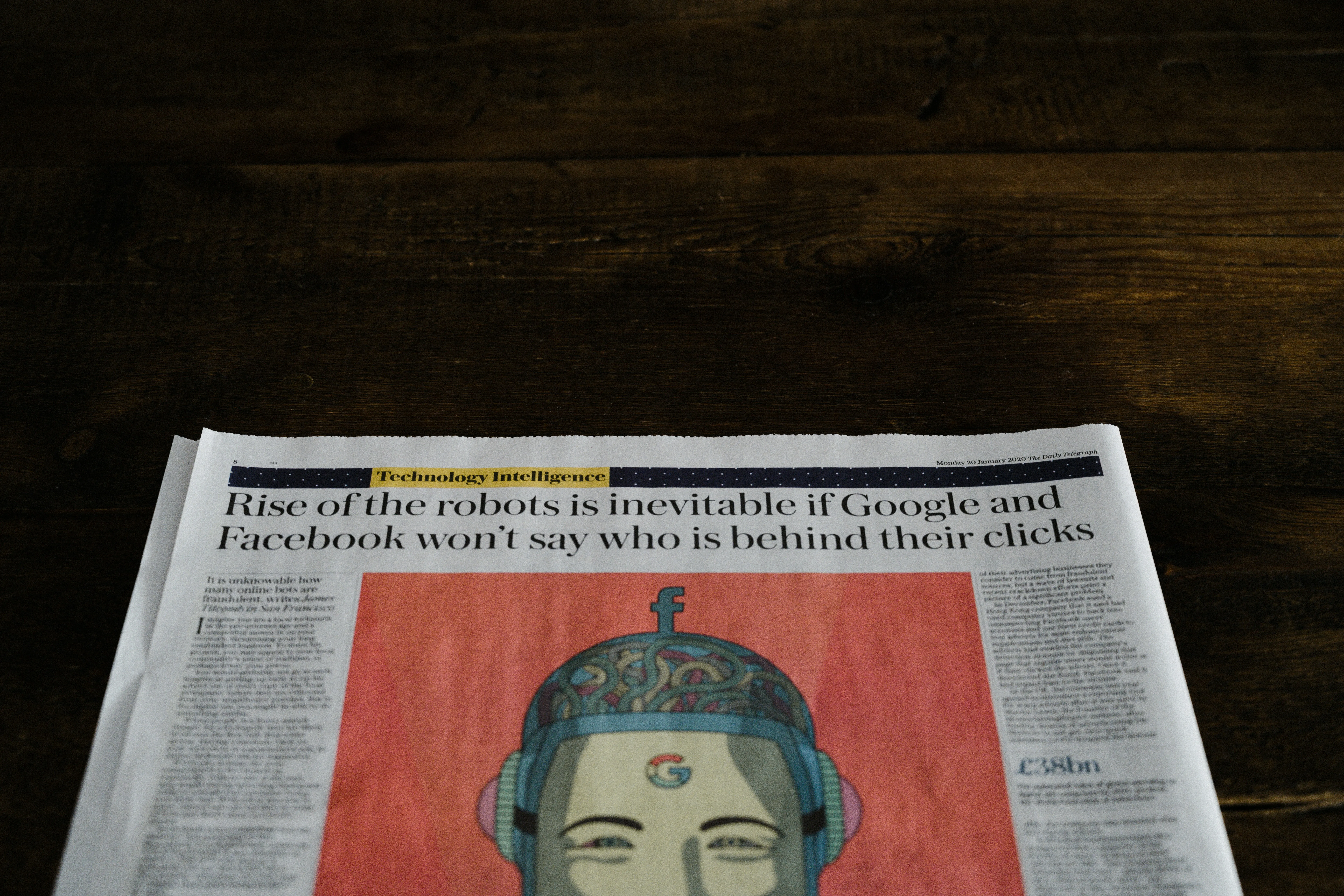
AI raises ethical, safety, and societal challenges for sure. We can explore issues like AI replacing human workers in various industries, the potential misuse of personal data, or vulnerabilities in AI systems that could be exploited.
There is also the fear that AI systems might become too autonomous and act in ways not aligned with human values, as well as bias and fairness; AI can perpetuate or amplify biases present in the data it’s trained on, leading to unfair outcomes.
By posing these questions, the aim is to encourage a balanced conversation about how to responsibly develop and regulate AI technologies, ensuring that their benefits are maximized while minimizing risks.
However, in this article, we are talking about two of these concerns: AI autonomy and AI regulation.
Will AI Take Over the World?
One of the most common fears about AI is whether it could become too powerful and take control of society.
While AI is advancing rapidly, it still operates within human-defined parameters and lacks independent consciousness. The biggest risks associated with AI today include:
- Job Displacement: Automation may replace certain roles, though it also creates new job opportunities.
- Bias in AI Models: AI learns from data, which can sometimes reinforce existing biases.
- Misinformation and Deepfakes: AI can generate convincing fake content, raising ethical concerns.
- Security Risks: AI-powered cyberattacks and automated scams are emerging threats.
Despite these risks, AI remains a tool that serves human interests when properly managed and regulated.
How AI Is Being Regulated
Governments and organizations are working to establish guidelines to ensure AI is used responsibly. Some current regulatory efforts include:
- EU AI Act: One of the first comprehensive AI regulations, focusing on transparency, safety, and ethical AI use.
- U.S. AI Executive Order: The U.S. is developing AI safety standards and ethical guidelines.
- Industry Self-Regulation: Companies like OpenAI, Google, and Meta are implementing internal safeguards to prevent AI misuse.
As AI evolves, regulations will be crucial in balancing innovation with ethical considerations.
AI Detection and Accuracy
Are AI Detectors Accurate?
AI detection tools are designed to identify whether a piece of content was generated by artificial intelligence. However, their accuracy can vary based on several factors:
- False Positives: Some detectors incorrectly flag human-written text as AI-generated.
- False Negatives: AI-generated content can sometimes evade detection, especially if it has been edited or paraphrased.
- Evolving AI Models: As AI writing tools improve, AI detectors must continuously adapt to new techniques.
Popular AI detectors include OpenAI’s AI classifier, GPTZero, and Turnitin’s AI detection tool, but none are 100% accurate. Businesses and educators should use AI detection as a guide rather than a definitive judgment.
Can You Tell If Something Was Written by AI?
There are a few ways to identify AI-generated content:
- Repetitive Patterns: AI tends to use similar phrasing and sentence structures and overuse certain words.
ChatGPT, for example, uses words like “delve”, “realm”, and “landscape”. Who writes like that? If it is not an article about the Ocean, Scotland, or Disney, those terms are possibly being used by AI.
It is also common to see LinkedIn posts that start with the words “In today’s digital era” or “In the world of artificial intelligence’s domain.”
- Lack of Personal Insights: AI-generated text often lacks unique personal experiences or deep subject matter expertise.
- Using AI Detection Tools: While not foolproof, AI detection software can provide insights into whether a text is AI-generated.
To ensure authenticity in business and marketing, it’s best to combine AI-generated content with human editing and personalization.
Who Owns OpenAI and Other Major AI Companies
OpenAI
OpenAI was originally founded as a non-profit AI research organization in 2015. However, it later transitioned to a “capped-profit” structure to attract funding while maintaining its mission of ensuring AI benefits humanity.
- Ownership: OpenAI is governed by the OpenAI board, with Microsoft as a major investor.
- Key Investors: Microsoft has invested billions into OpenAI, integrating its AI models into products like Azure, Bing, and Copilot.
Google DeepMind
DeepMind, one of the pioneers in AI research, is owned by Alphabet (Google’s parent company). Google has integrated DeepMind’s AI advancements into various products, including Google Search and Google Gemini.
Meta AI
Meta (formerly Facebook) owns Meta AI, which powers AI-driven products across Facebook, Instagram, and WhatsApp. Meta AI focuses on open-source AI models and AI-driven personalization.
Anthropic
Anthropic, an AI research company focused on AI safety, was founded by former OpenAI researchers.
- Ownership: It remains independent but has received major funding from Amazon and Google.
- Product: Anthropic developed Claude AI, a competitor to ChatGPT.
Other Major AI Players
- Amazon: Develops AI models for Alexa and cloud-based AI services via AWS.
- Tesla: Uses AI for self-driving technology and robotics.
- Nvidia: Primarily produces AI chips and GPUs but is expanding its AI research.
How to Learn AI: Getting Started with AI Education
For beginners looking to understand AI, here’s how to get started:
1. Learn the Basics of AI
- Online Courses: Platforms like Coursera, Udacity, and edX offer beginner-friendly AI courses.
- AI Blogs & YouTube Channels: Follow AI experts and educators for simplified explanations.
2. Experiment with AI Tools
- Chatbots & AI Assistants: Try using ChatGPT, Gemini AI, or Copilot for daily tasks.
- AI Design & Content Tools: Experiment with tools like Canvas AI, DALL·E, or Runway ML for creative projects.
3. Explore No-Code AI Platforms
For those without programming experience, platforms like Bubble AI or Google AutoML allow users to build AI-powered applications without coding.
4. Learn AI Coding (Optional)
If interested in technical AI development, start with:
- Python programming (popular for AI development)
- Libraries like TensorFlow and PyTorch for machine learning
Key Takeaways About AI and Its Applications
- AI is more accessible than ever. Small businesses can use AI for marketing, automation, and customer service.
- Different types of AI exist. From generative AI to AI-powered assistants, businesses can leverage AI in various ways.
- AI is not perfect. While AI improves efficiency, it should be combined with human oversight.
- AI regulations are evolving. Governments are working on policies to ensure responsible AI use.
- Anyone can start using AI. With the right tools and learning resources, beginners can integrate AI into their workflows.
Take the Next Step – Start Harnessing AI for Your Success!
For deeper insights into how you can leverage AI for your business growth, check out OneLocal’s Local Analytics platform. It’s a powerful tool that helps businesses like yours track key metrics and drive success—offering personalized support, tailored analytics, and insights that can guide your next move.
Artificial intelligence is no longer just for tech giants—it’s a tool small businesses can leverage to improve efficiency, creativity, and profitability.
Whether it’s automating marketing tasks, streamlining customer support, or generating creative content, AI opens a world of possibilities. From understanding the basics of AI to exploring its different types and applications, businesses can begin incorporating AI into their daily workflows easily.
As you embark on your AI journey, remember that AI is most effective when combined with human insight. It’s an exciting tool that, when used wisely, can revolutionize the way you do business.
Ready to elevate your business with AI?
Start by experimenting with AI tools for your business, whether it’s for content generation, customer support, or analytics. With the right AI solutions, you can take your business to new heights and stay ahead of the competition.

